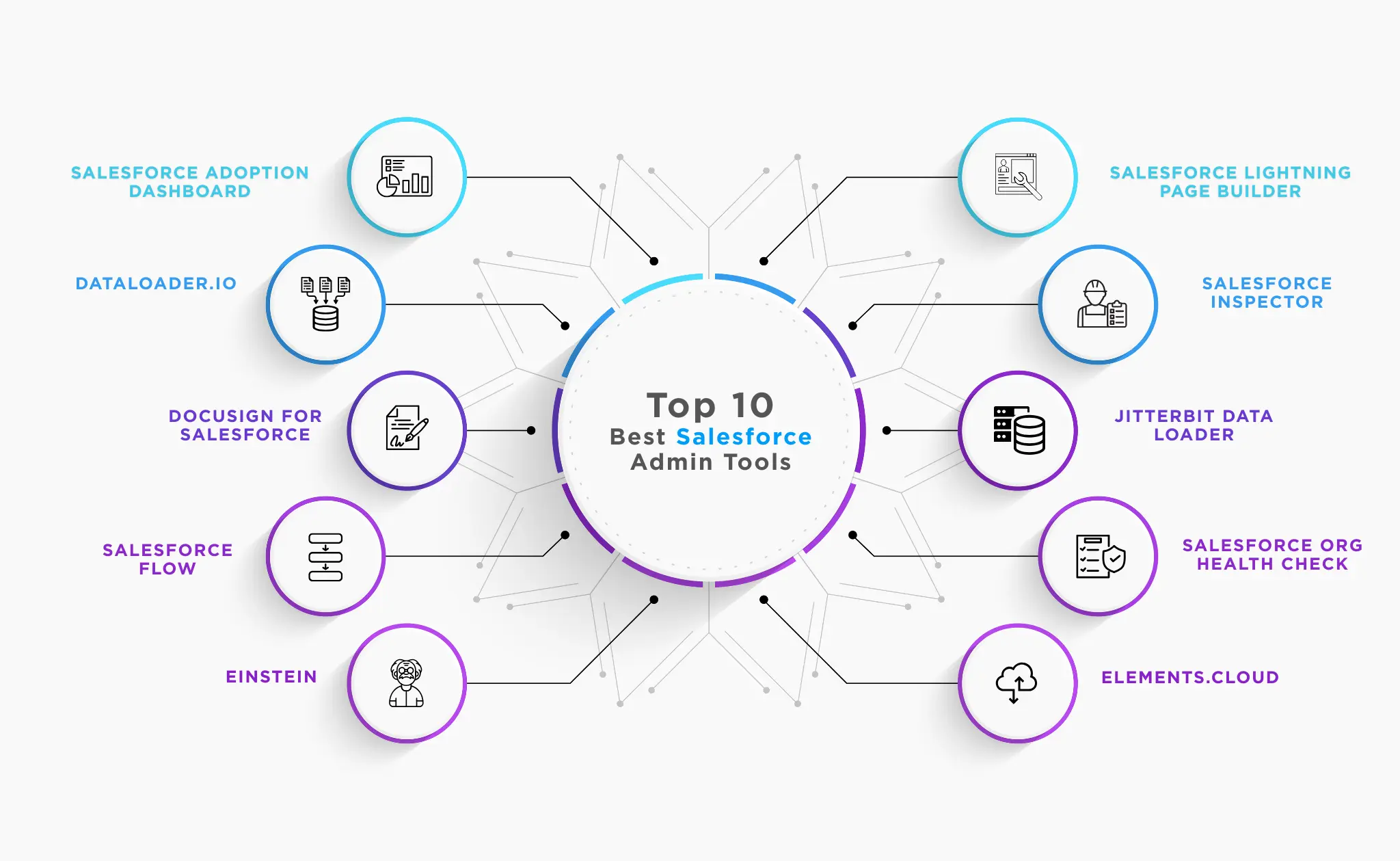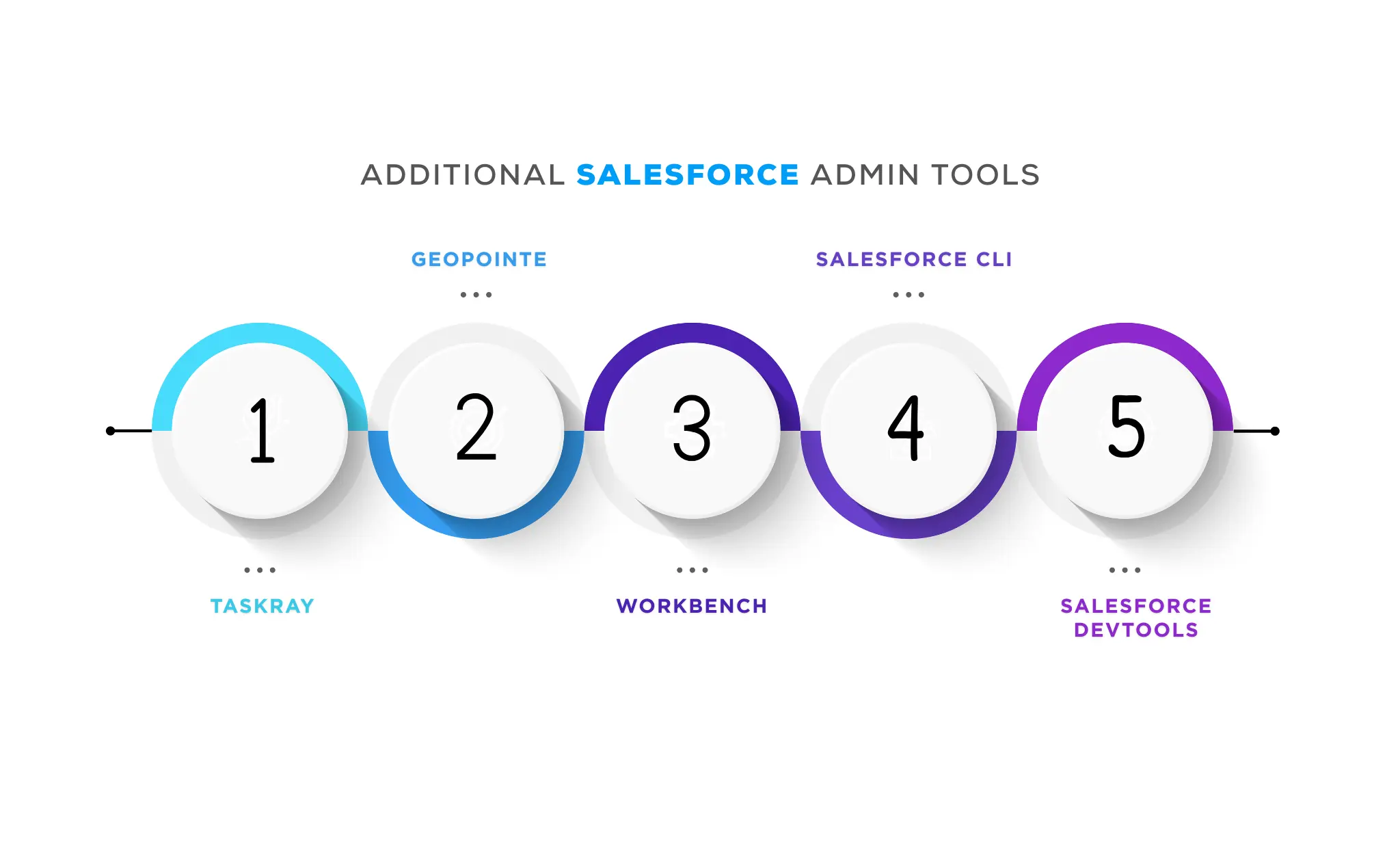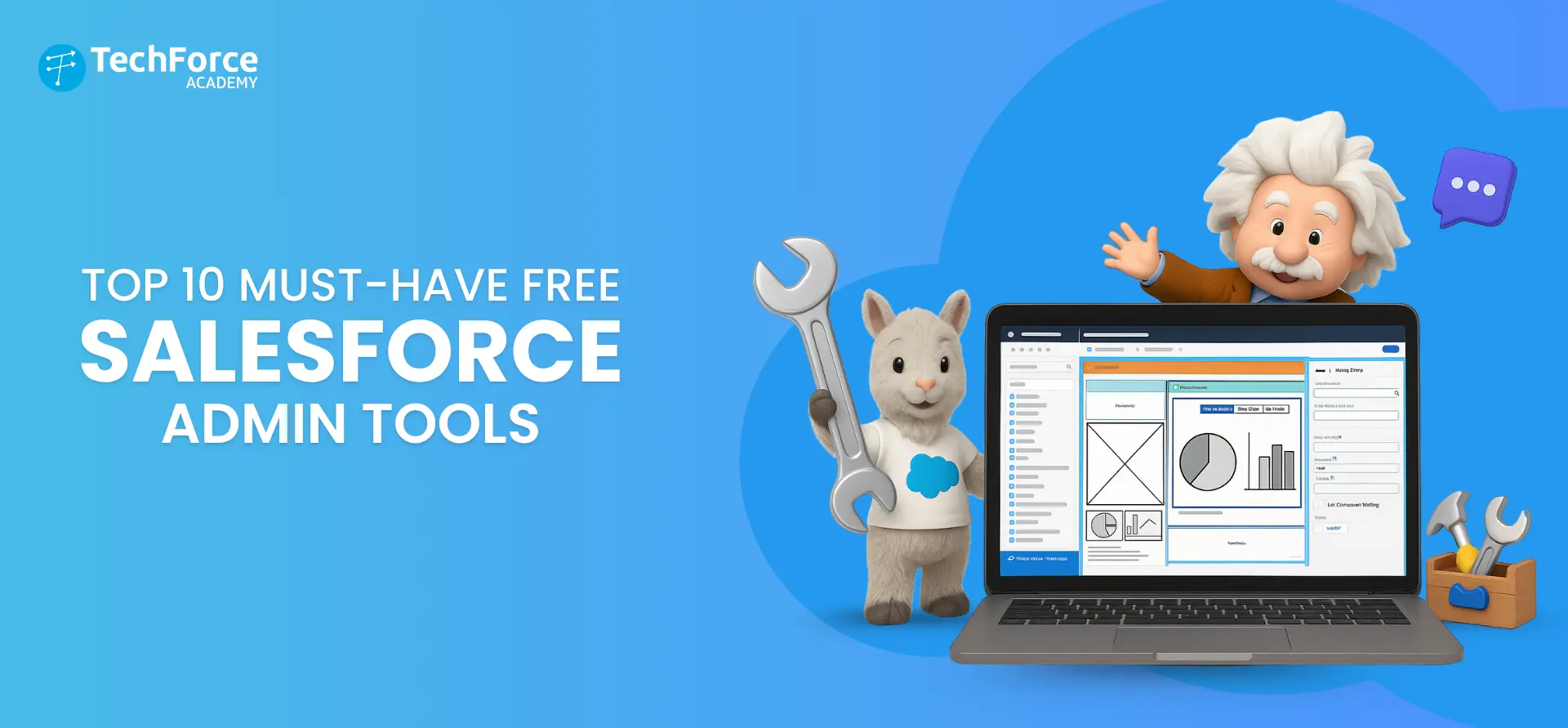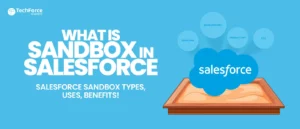As a Salesforce Admin, you need the best tools to stay ahead and work efficiently. Salesforce Admin tools are important for you if you are managing and customising a Salesforce environment.
In 2025, there are many free tools that help you manage data, automate tasks, and keep your Salesforce environment safe and organised. Tools like Dataloader.io, Salesforce Inspector, and Lightning Page Builder make your work simpler and help you achieve more.
If you want to upgrade your admin skills, using these tools is a must. They reduce your workload and make your work life better, whether you are just starting or already working in the field. This blog lists the top ten free and best tools for Salesforce admins that help you customise, manage data, and give users the best experience.
Note: All the tools listed here give you free versions or come with your Salesforce license. But many also offer better features, let you use more data, or offer premium support as part of paid plans. You should always look closely at each tool’s cost and what it offers to make sure it works for what you need.
Top 10 Best Salesforce Admin Tools for 2025

1. Salesforce Adoption Dashboard
- Features: This dashboard gives real-time updates on how users are using Salesforce. It shows user activity and engagement data.
- Usage: Admins use it to see how people interact with Salesforce. It helps them find users who aren’t active and create training plans to boost usage.
- Use Cases: For example, a sales operations admin can use this dashboard to find out which teams are not logging their activities. They can then give extra help or training to those teams.
- Limitations: The dashboard shows basic charts and data. If you want more advanced visuals and deep analysis, you’ll need tools like Salesforce CRM Analytics.
- Free or Paid: This dashboard comes free with standard Salesforce licenses. But for more advanced analytics, you might need to pay for extra tools.
2. Dataloader.io
- Features: You may import, export, and remove a lot of data at once with the help of the cloud-based tool Dataloader.io.
- Usage: It makes data migration and clean-up easier. It’s great for uploading many leads, contacts, or opportunities at the same time.
- Use Cases: Let’s say you’re moving data from an old CRM. You can use Dataloader.io to upload the information without errors, thanks to its duplicate-checking feature.
- Limitations: The free version has limits on API calls. Also, if you’re working with very large datasets, it might run slower.
- Free or Paid: Freemium. Basic version with some limits. If you need more features or higher usage limits, you’ll need a paid subscription.
3. DocuSign for Salesforce
- Features: This tool enables document signing and management directly within Salesforce.
- Usage: It helps automate document processes, so you don’t have to deal with paperwork. This makes it faster to close deals.
- Use Cases: Sales teams can send NDAs or contracts directly from the opportunity record and track signing status in real time.
- Limitations: Advanced features like bulk send and advanced workflows require paid plans, and initial setup may be required.
- Free or Paid: Basic features are at no cost; more advanced capabilities require a paid subscription.
4. Salesforce Flow
- Features: Salesforce Flow is a drag-and-drop application that facilitates the automation of business processes within Salesforce.
- Usage: Admins use it to build workflows that update records, guide users through steps, and connect with other systems.
- Use Cases: Admins often use Flow to handle approval processes, multi-step tasks, and repeat actions automatically.
- Limitations: There is a learning curve, and some advanced features may require developer input.
- Free or Paid: Basic Flow functionality is included. Advanced features may require additional licensing.
5. Einstein
- Features: Einstein is an AI-powered assistant that provides recommendations, forecasts, and data analysis.
- Usage: It helps Salesforce administrators make intelligent decisions by suggesting next steps and analysing data.
- Use Cases: Admins use Einstein to forecast sales, analyse customer data, and recommend actions.
- Limitations: Advanced analytics and features may require additional licensing.
- Free or Paid: Basic Einstein features are included; advanced analytics require a paid license.
6. Salesforce Lightning Page Builder
- Features: This is a drag-and-drop tool that helps you build custom pages in Salesforce.
- Usage: Non-developers can design record pages, home pages, and app pages without any coding.
- Use Cases: Admins can highlight important fields and components for different user profiles on account pages.
- Limitations: Some advanced visibility settings need extra Lightning Components. What you can build also depends on what components your org has.
- Free or Paid: It is included for free with Salesforce licenses.
7. Salesforce Inspector
- Features: Salesforce Inspector is a Chrome extension. You can view, export, and edit Salesforce data and metadata with ease by using it.
- Usage: It is excellent for debugging, exploring object metadata, and making quick data edits without using SOQL queries in the Developer Console.
- Use Cases: Admins and developers use it to pull field metadata, test API names, and update data instantly.
- Limitations: It is a browser extension and only available on desktop; security concerns may require IT approval.
- Free or Paid: It is free to use.
8. Jitterbit Data Loader
- Features: Jitterbit Data Loader is a free ETL (Extract, Transform, Load) tool for handling complex data operations and transformations.
- Usage: It makes it easier to connect different systems and keep data in sync with Salesforce.
- Use Cases: Companies use it to sync ERP data with Salesforce objects regularly.
- Limitations: It is desktop-based and has limited cloud functionality; the user interface may feel outdated compared to newer tools.
- Free or Paid: It is free to use.
9. Salesforce Org Health Check
- Features: This tool evaluates org security, sharing settings, and compares them to Salesforce’s best practices.
- Usage: It detects vulnerabilities, over-permissioned profiles, and performance issues.
- Use Cases: dmins use it each month to make sure the org follows IT security rules.
- Limitations: It only covers security aspects and not performance metrics like page load speed; admin rights are required to access it.
- Free or Paid: It is free to use.
Also read: Salesforce health check tips.
10. Elements.cloud
- Features: Elements.cloud is a metadata dictionary and org documentation tool that supports change impact analysis.
- Usage: It helps admins check what will be affected before they change or delete fields, flows, or Apex code.
- Use Cases: Before deleting a custom field, an admin uses Elements.cloud to check all references and dependencies.
- Limitations: Advanced features like org comparisons and visual modelling may require paid plans. Also, you must first sync your org’s metadata to get started.
- Free or Paid: Basic features are free; advanced features require a paid subscription.
Want to master these tools? Check out our course – a 6-week Salesforce admin training certification course.
Additional Helpful Tools

1. TaskRay (Free Edition)
- Features: TaskRay brings Kanban-style project management into Salesforce.
- Usage: It is ideal for onboarding workflows, internal team projects, or customer implementation tracking.
- Use Cases: Customer success teams can track client onboarding post-sale directly within Salesforce.
- Limitations: The free version only gives you a few templates and limits how many people can use it. It also doesn’t include advanced automation.
- Free or Paid: There is a free version. If you want more features, you’ll need to pay for a license.
2. Geopointe (Free Tier)
- Features: Geopointe is a geolocation and mapping app for visualising data geographically within Salesforce.
- Usage: It enables territory planning and geographic analysis of accounts, leads, and opportunities.
- Use Cases: Sales reps use it to plan their travel routes and see which areas are performing the best.
- Limitations: The free version may limit how much data you can map. You’ll need a paid license for full access to features.
- Free or Paid: A free tier is available, but you’ll need to pay to unlock advanced tools.
3. Workbench
- Features: Workbench is a web-based tool for working with Salesforce data and metadata.
- Usage: Admins and developers use it to update records, check data, and manage components.
- Use Cases: It proves useful for swiftly resolving issues or executing complex tasks that demand direct manipulation of data.
- Limitations: It requires technical knowledge and is not intended for end users.
- Free or Paid: It is a no cost tool.
4. Salesforce CLI
- Features: Salesforce CLI is a command line interface for managing orgs, synchronising source code, building and installing packages, and running tests.
- Usage: It is essential for automating activities, integrating with continuous integration tools, and improving the development pipeline.
- Use Cases: Developers and admins use it to sync source code, run tests, and manage deployments.
- Limitations: It requires technical expertise and is command line only.
- Free or Paid: It is free to use.
5. Salesforce DevTools
- Features: Salesforce DevTools is a browser extension for Chrome, Safari, Firefox, and Edge that provides a set of tools for application development, testing, and debugging.
- Usage: It makes it easy to monitor logs, run anonymous Apex, and examine performance.
- Use Cases: Admins and developers use it to increase productivity and optimise their development process.
- Limitations: It is a browser extension only and requires developer or admin access.
- Free or Paid: It is free to use.
Best Practices for Using Free Salesforce Tools
- Always test new tools in a sandbox before using them in your main org.
- Watch your API limits, as some tools can use a lot of calls.
- Set the right permissions so that only trusted users can access external tools.
- Regularly check your data for duplicates or errors.
- Keep your tools updated to get the latest features and security fixes.
How Paid Tools Differ from Free Ones
Paid tools often offer advanced automation, analytics, and high-volume processing. They come with dedicated customer support, enterprise-grade security, and more customisation options. Free tools are great for basic operations and learning, but may have limits on data, features, and support.
Why These Tools Matter
Each tool fulfils a unique role, ranging from automation and AI-powered assistance to managing data and ensuring security. Using these free resources allows Salesforce Admins to operate more effectively, personalise their organisations without writing code. These tools streamline their operations while preserving data security.
Conclusion
With Salesforce technology always changing, the right tools help you stand out as a smart and efficient admin. These Salesforce CRM admin tools for 2025 let you manage your org well and keep up with the latest in AI, automation, and security.
Mastering them will make your work easier, help you avoid problems, and deliver better results for your company.
If you want to become a Salesforce admin, learning these tools is a great first step.











